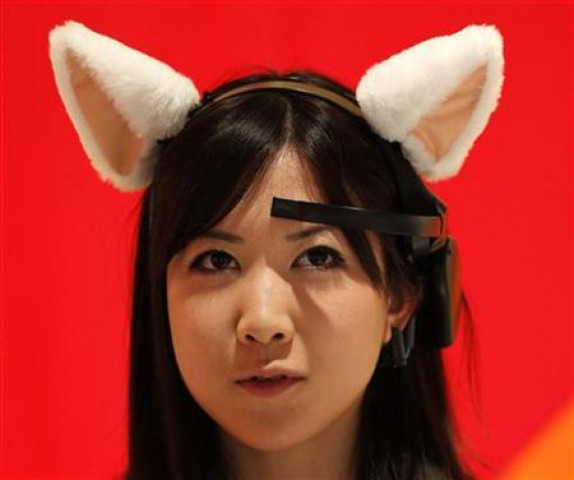Feline fun with hi-tech headgear
Necomimi can detect and interpret the emotional state of the wearer, expressing it through four distinct movements.

With two brain-wave sensors, Necomimi can detect and interpret the emotional state of the wearer, expressing it through four distinct movements.
The eats shoot up with the wearer is nervous or focused, but flatten when the person is relaxed.
During a specific activity like a game or reading a book, in which the user may be relaxed and focused at the same time, the ears swirl around in a circular motion. When brain activity is low, they flap gently back and forth.
The science of neuro-control is being developed in labs all over the world as a way to help the disabled or victims of 'locked-in' syndrome, where a patient is awake but unable to move or communicate, but Necomimi's creators at a firm called Neuroscience wanted something for all to enjoy.
The cat theme required some tinkering, though.
"For example, when cats are frightened or want to scare away an enemy, they flatten their ears. But with Necomimi, flat ears mean a relaxed state of mind," said Kana Nakano at Neurowave, one of Necomimi's creators.
"We have changed the meaning to suit human perceptions. To humans, it's kind of cute when cat ears are flat. So the most difficult bit was to fine tune cat ear movements."
In Switzerland, scientists are adapting neurowave technology for wheelchair users, while in Germany. it's being tested as a means for operating a car.
While the cat ears may seem like a trivial approach, the developers say the technology could be adapted as a communication tool for those who may be reclusive or shy around strangers.
For now, however, Necomimi is aimed at the curious and the fashion-conscious.
"I find it amusing that cat ears were moving in conjunction with my feelings," said Misa Tokuizumi, a dentist. Neurowave said it plans to launch the Necomimi internationally later this year at a price of several hundred dollars per unit.



















COMMENTS
Comments are moderated and generally will be posted if they are on-topic and not abusive.
For more information, please see our Comments FAQ